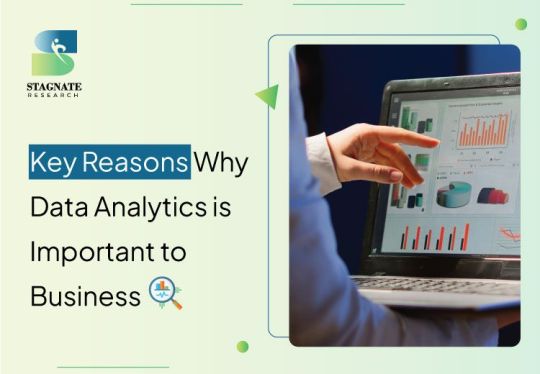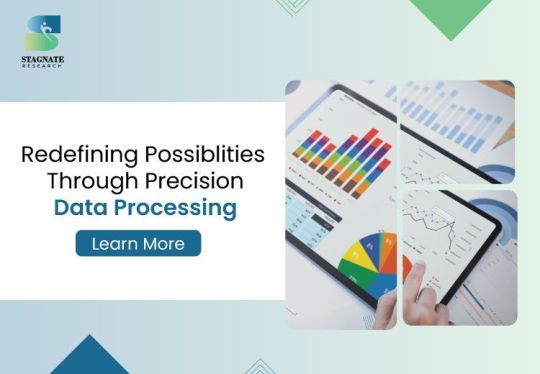#DataCollection
Explore tagged Tumblr posts
Text
The Ultimate Data Collection Handbook: Exploring Methods, Types, and Advantages

Data collection is a fundamental part of any research, business strategy, or decision-making process. Whether you're a student, a professional, or just curious about how data is gathered and used, understanding the basics of data collection can be incredibly useful. In this guide, we'll explore the methods, types, and benefits of data collection in a way that’s easy to understand.
What is Data Collection?
Data collection is the process of gathering information to answer specific questions or to support decision-making. This information, or data, can come from various sources and can be used to make informed decisions, conduct research, or solve problems.
Methods of Data Collection
Surveys and Questionnaires
What Are They? Surveys and questionnaires are tools used to gather information from people. They can be distributed in person, by mail, or online.
How Do They Work? Respondents answer a series of questions that provide insights into their opinions, behaviors, or experiences.
When to Use Them? Use surveys and questionnaires when you need to gather opinions or experiences from a large group of people.
Interviews
What Are They? Interviews involve asking questions to individuals in a one-on-one setting or in a group discussion.
How Do They Work? The interviewer asks questions and records the responses, which can be either structured (with set questions) or unstructured (more conversational).
When to Use Them? Use interviews when you need detailed, qualitative insights or when you want to explore a topic in depth.
Observations
What Are They? Observations involve watching and recording behaviors or events as they happen.
How Do They Work? The observer notes what is happening without interfering or influencing the situation.
When to Use Them? Use observations when you need to see actual behavior or events in their natural setting.
Experiments
What Are They? Experiments involve manipulating variables to see how changes affect outcomes.
How Do They Work? Researchers control certain variables and observe the effects on other variables to establish cause-and-effect relationships.
When to Use Them? Use experiments when you need to test hypotheses and understand the relationships between variables.
Secondary Data Analysis
What Is It? This method involves analyzing data that has already been collected by someone else.
How Does It Work? Researchers use existing data from sources like government reports, research studies, or company records.
When to Use It? Use secondary data analysis when you need historical data or when primary data collection is not feasible.
Types of Data
Quantitative Data
What Is It? Quantitative data is numerical and can be measured or counted.
Examples: Age, income, number of products sold.
Use It When: You need to quantify information and perform statistical analysis.
Qualitative Data
What Is It? Qualitative data is descriptive and involves characteristics that can be observed but not measured numerically.
Examples: Customer feedback, interview responses, descriptions of behavior.
Use It When: You need to understand concepts, opinions, or experiences.
Benefits of Data Collection
Informed Decision-Making
Data provides insights that help individuals and organizations make informed decisions based on evidence rather than guesswork.
Identifying Trends and Patterns
Collecting data allows you to identify trends and patterns that can inform future actions or strategies.
Improving Services and Products
By understanding customer needs and preferences through data, businesses can improve their products and services to better meet those needs.
Supporting Research and Development
Data is crucial for researchers to test hypotheses, validate theories, and advance knowledge in various fields.
Enhancing Efficiency
Data helps in streamlining processes and improving operational efficiency by highlighting areas that need attention or improvement.
Conclusion
Understanding the methods, types, and benefits of data collection can greatly enhance your ability to gather useful information and make informed decisions. Whether you're conducting research, running a business, or just curious about the world around you, mastering data collection is a valuable skill. Use this guide to get started and explore the many ways data can help you achieve your goals.
To know more: A Guide to Data Collection: Methods, Types, and Benefits
Outsource Data Collection Services
5 notes
·
View notes
Text
7 Key Principles to Drive Success in Market Research

Market research plays a crucial role in guiding business strategies and decision-making. Here are seven key principles to ensure success in your market research efforts:
1. Define Clear Objectives
Start with well-defined goals. Understand what insights you need and how they will support your business decisions.
2. Know Your Audience
Identify and segment your target audience effectively. Tailor your research methods to align with their preferences and behaviors.
3. Choose the Right Methodology
Select the most suitable research approach, whether qualitative, quantitative, or a hybrid model, to ensure meaningful results.
4. Leverage Advanced Tools and Technology
Incorporate AI, big data, and analytics tools to enhance data accuracy and speed. Modern technology can streamline data collection and interpretation.
5. Ensure Data Quality
Prioritize data accuracy, relevance, and reliability. Scrutinize data sources and methodologies to avoid biased or incomplete insights.
6. Adhere to Ethical Standards
Respect privacy and comply with regulations like GDPR. Ethical practices build trust and credibility with your audience.
7. Translate Insights into Action
Insights are valuable only when applied. Create actionable recommendations and integrate them into your strategy to drive results.
By following these keys, businesses can elevate their market research practices and gain a competitive edge in their industry.
To know more: online market research platforms
online panel management platform
fraud detection and reporting tool
#market research#onlineresearch#samplemanagement#panelmanagement#communitypanel#datacollection#onlinesurvey#fraud detection#datainsights
2 notes
·
View notes
Text
Scrape Uber Eats Data in the US for Market Insights Scrape Uber Eats data in the US to unlock market insights. Track menu trends, prices, and popular items to refine your food business strategy effortlessly.
#UberEatsFoodDataScraping#UberEatsRestaurantDataScraping#UberEatsMenuDataScraping#UberEatsFoodDeliveryDataScraping#UberEatsScraper#ScrapeUberEatsFoodData#ExtractUberEatsFoodData#UberEatsScrapingServices#ScrapingUberEatsFoodData#WebScrapingAPI#WebScraping#DataScraping#RealDataAPI#DataExtraction#ExtractData#ScrapeData#DataCollection#UK#USA#UAE#Australia#Singapor#NewZealand#canada#Malesiya#Germany#France#Russia#Japan#China
2 notes
·
View notes
Text
Your Guide to Success in Quantitative Research: 8 Practical Tips

Quantitative research plays a crucial role in fields like social sciences, business, healthcare, and education. It provides numerical data that can be analyzed statistically to identify patterns, relationships, and trends. However, excelling in quantitative research requires more than just crunching numbers.
1. Start with a Clear Research Question
The foundation of any successful research is a well-defined research question. This question guides the entire study, determining your methodology, data collection, and analysis. Ensure that your research question is specific, measurable, and aligned with the purpose of your study.
For example, instead of asking, "How do students perform in school?" a clearer question might be, "What is the relationship between study hours and academic performance in high school students?"
Tip: Before starting, spend time refining your question. This will save you time and effort during the research process.
2. Choose the Right Research Design
Quantitative research can take many forms, including experiments, surveys, and observational studies. Choosing the right design depends on your research objectives and the type of data you need. Are you testing a hypothesis?
Tip: Match your research design with your objectives to ensure you’re collecting the right kind of data.
3. Use Valid and Reliable Instruments
The tools you use to gather data—whether they’re questionnaires, tests, or measuring devices—must be both valid (measuring what you intend to measure) and reliable (producing consistent results over time).
Tip: If you’re developing your own instrument, pilot it first with a small group to check its validity and reliability. If using an existing tool, review past studies to confirm it works well for your research population.
4. Select an Appropriate Sample Size
A common mistake in quantitative research is working with a sample size that’s too small, which can lead to unreliable or inconclusive results. On the other hand, excessively large samples can waste resources. To avoid these pitfalls, conduct a power analysis to determine the optimal sample size for your study.
Tip: Use tools like G*Power to calculate the right sample size based on your research goals and the expected effect size. This ensures your findings are statistically significant and applicable to a larger population.
5. Ensure Random Sampling for Representativeness
Your findings will only be meaningful if your sample represents the broader population you’re studying. Random sampling ensures that every individual in the population has an equal chance of being selected, reducing bias and increasing the generalizability of your results.
Tip: Use random sampling methods (e.g., simple random sampling, stratified random sampling) to ensure your data is as representative as possible.
6. Minimize Bias in Data Collection
Bias can creep into any research process, affecting the accuracy and fairness of your results. To reduce bias, carefully design your data collection process. For example, avoid leading questions in surveys and standardize how data is collected across all participants to prevent interviewer or observer bias.
Tip: Blind or double-blind studies can help minimize bias, especially in experiments where participants or researchers might be influenced by expectations.
7. Analyze Data Properly with the Right Statistical Tools
Once you’ve collected your data, the next step is analysis. Choosing the right statistical tests is essential to interpret your findings correctly. Descriptive statistics (like means and frequencies) give a broad overview, while inferential statistics (like t-tests, chi-squares, or regression analyses) help determine whether your findings are statistically significant.
Tip: If you’re unsure which test to use, consult a statistician or use resources like statistical decision trees to guide your choice based on your data type and research questions.
8. Interpret Results with Context and Caution
After analyzing your data, it’s tempting to jump to conclusions. However, quantitative research is not just about the numbers; it’s about what those numbers mean in context. Always interpret your results in relation to your research question and the existing body of knowledge.
Be cautious when generalizing your findings, especially if your sample size is small or non-representative. Additionally, consider the limitations of your study—were there any confounding variables, measurement errors, or external factors that might have influenced your results?
Tip: Be transparent about the limitations of your study. Acknowledging them strengthens the credibility of your research.
Conclusion
Mastering quantitative research requires attention to detail, a solid understanding of statistical methods, and a commitment to rigor throughout the process. By following these 8 practical tips—starting with a clear question, choosing the right design, using valid instruments, selecting the appropriate sample, minimizing bias, analyzing correctly, and interpreting results carefully—you’ll be well on your way to conducting successful and impactful quantitative research.
Read more: https://stagnateresearch.com/blog/how-to-excel-in-quantitative-research-8-essential-tips-for-success/
Also read: Project Management Service Company
data processing in research services
#onlineresearch#marketresearch#datacollection#project management#survey research#data collection company#business
3 notes
·
View notes
Text
EXPLANATION OF DATA SCIENCE
Data science
In today's data-driven world, the term "data science" has become quite the buzzword. At its core, data science is all about turning raw data into valuable insights. It's the art of collecting, analyzing, and interpreting data to make informed decisions. Think of data as the ingredients, and data scientists as the chefs who whip up delicious insights from them.

The Data Science Process
Data Collection: The journey begins with collecting data from various sources. This can include anything from customer surveys and social media posts to temperature readings and financial transactions.
Data Cleaning: Raw data is often messy and filled with errors and inconsistencies. Data scientists clean, preprocess, and organize the data to ensure it's accurate and ready for analysis.
Data Analysis: Here's where the real magic happens. Data scientists use statistical techniques and machine learning algorithms to uncover patterns, trends, and correlations in the data. This step is like searching for hidden gems in a vast treasure chest of information.
Data Visualization: Once the insights are extracted, they need to be presented in a way that's easy to understand. Data scientists create visualizations like charts and graphs to communicate their findings effectively.
Decision Making: The insights obtained from data analysis empower businesses and individuals to make informed decisions. For example, a retailer might use data science to optimize their product inventory based on customer preferences.

Applications of Data Science
Data science has a wide range of applications in various industries.
Business: Companies use data science to improve customer experiences, make marketing strategies more effective, and enhance operational efficiency.
Healthcare: Data science helps in diagnosing diseases, predicting patient outcomes, and even drug discovery.
Finance: In the financial sector, data science plays a crucial role in fraud detection, risk assessment, and stock market predictions.
Transportation: Transportation companies use data science for route optimization, predicting maintenance needs, and even developing autonomous vehicles.
Entertainment: Streaming platforms like Netflix use data science to recommend movies and TV shows based on your preferences.
Why Data Science Matters
Data science matters for several reasons:
Informed Decision-Making: It enables individuals and organizations to make decisions based on evidence rather than guesswork.
Innovation: Data science drives innovation by uncovering new insights and opportunities.
Efficiency: Businesses can streamline their operations and reduce costs through data-driven optimizations.
Personalization: It leads to personalized experiences for consumers, whether in the form of product recommendations or targeted advertisements.
In a nutshell, data science is the process of turning data into actionable insights. It's the backbone of modern decision-making, fueling innovation and efficiency across various industries. So, the next time you hear the term "data science," you'll know that it's not just a buzzword but a powerful tool that helps shape our data-driven world.
Overall, data science is a highly rewarding career that can lead to many opportunities. If you're interested in this field and have the right skills, you should definitely consider it as a career option. If you want to gain knowledge in data science, then you should contact ACTE Technologies. They offer certifications and job placement opportunities. Experienced teachers can help you learn better. You can find these services both online and offline. Take things step by step and consider enrolling in a course if you’re interested.
Thanks for reading.
2 notes
·
View notes
Text
Market Research Services

Are you looking to gain a competitive edge in your industry? 🚀
Marketing research services provide invaluable insights into consumer behavior, market trends, and competitor analysis. With this information, you can tailor your marketing strategies to target the right audience, optimize your campaigns, and identify lucrative opportunities for growth. As a Marketing outsourcing company, Navigant offers a full suite of market research operations and data analytics solutions to clients.
Just let us know where you need support, and we’ll step in and take care of the rest.
Book A Meeting: https://meetings.hubspot.com/sonal-arora Web: www.navigant.in Email us at: [email protected] Cell: +91 9354739641
#Navigant#DataDrivenStrategies#BusinessGrowth#marketresearch#marketing#business#research#digitalmarketing#marketingstrategy#branding#market#entrepreneur#startup#dataanalytics#data#insights#marketanalysis#technology#datacollection#socialmediamarketing#entrepreneurship#customerexperience#leadgeneration
3 notes
·
View notes
Text

Get your data-gathering groove on with our "Collecting Data Is My Cardio" shirt! This tee is the perfect gift for behavior analysts, BCBA-certified professionals, and special education teachers. Embrace your passion for data-driven insights and show your dedication to autism awareness and ABA therapy. Wear it proudly as a statement of your commitment to making a positive impact!
#datacollection#behavioranalyst#BCBA#specialeducation#autismawareness#ABATherapist#tshirt#giftideas#datadriven#passion#dedication
2 notes
·
View notes
Text
With the proliferation of cloud native applications, organizations today are dealing with an abundance of data from various sources. Collecting and analyzing this data effectively has become crucial for businesses to gain insights and make data-driven decisions. In this blog post, we will explore the best practices for data collection and analysis in the age of numerous cloud native applications, and how Crest Data Systems’ solutions can help organizations optimize their data strategies in this evolving landscape.
2 notes
·
View notes
Text

“Looking for a reliable and affordable way to extract data from Grubhub’s website? Look no further! Our web scraping services can help you gather crucial data from Grubhub’s website, allowing you to understand your customers better and improve your marketing strategy. From menus and pricing to customer reviews and ratings, our team can extract the data you need to stay ahead of the competition. So why wait? Contact us today to learn more about our web scraping services and start getting the data you need to succeed!
For more information, https://hirinfotech.com/website-scraping/ or contact us at [email protected]
2 notes
·
View notes
Text
Enhancing Data Collection: Advanced Methods and Tools
Enhancing data collection involves adopting advanced methods and tools that improve accuracy, efficiency, and the depth of insights. Techniques such as machine learning, real-time data capture, and IoT sensors allow for more dynamic, scalable, and precise data gathering. Tools like advanced survey platforms, big data analytics, and AI-driven data processing enable faster analysis and decision-making. By leveraging these technologies, organizations can transform raw data into valuable, actionable intelligence Read More..

1 note
·
View note
Text
Unlock the Power of Data with Web Crawling Services
In today's digital era, data is the driving force behind every successful business decision. Whether it's tracking competitors, analyzing market trends, or extracting real-time information, having access to accurate and structured data is crucial. This is where web crawling services come into play, enabling businesses to gather and process vast amounts of web data efficiently.

Why Do Businesses Need Web Crawling Services?
Web crawling services provide businesses with automated solutions to extract relevant information from websites. Here are some key reasons why companies rely on web crawling:
1. Market & Competitor Analysis
Understanding competitor strategies and market dynamics can give businesses a significant edge. Web crawling helps collect data on pricing, customer reviews, and product offerings, enabling companies to stay ahead of the competition.
2. Stock & Finance Data Extraction
For financial institutions and investors, real-time data is crucial. With extract stock & finance data solutions, businesses can gather stock market trends, financial reports, and economic indicators to make informed investment decisions.
3. News & Media Insights
Staying updated with global news and media trends is essential for businesses. Extract news & media data services allow organizations to monitor breaking news, analyze sentiment, and track media coverage across various platforms.
4. Content & Pricing Analysis
E-commerce businesses need up-to-date information on pricing, product availability, and customer preferences. Using extract content & pricing solutions, businesses can track competitive pricing strategies and optimize their offerings accordingly.
5. Food Delivery Market Insights
The food delivery industry is rapidly evolving, making real-time data essential for restaurants and aggregators. Food delivery data scraping services help businesses track menu pricing, customer reviews, and delivery trends, ensuring they stay competitive.
Benefits of Enterprise Web Crawling Services
1. High-Quality, Structured Data
Web crawling services ensure that businesses receive well-organized and structured data that is ready for analysis and decision-making.
2. Real-Time Data Extraction
Access to real-time data allows businesses to respond quickly to market changes, ensuring they remain competitive and relevant.
3. Scalable and Customizable Solutions
Enterprise-grade web crawling solutions are scalable and can be customized to meet the specific needs of different industries.
4. Compliance and Data Security
Reputable web crawling service providers ensure compliance with data protection regulations, safeguarding sensitive business information.
Conclusion
Web crawling services have become a necessity for businesses looking to harness the power of data. Whether you need insights on market trends, financial data, news updates, pricing strategies, or food delivery analytics, the right web crawling solution can make all the difference.Explore web crawling services today and take your business intelligence to the next level!
0 notes
Text

Enhance your research and project management skills with strategies, tools, and best practices. Learn how to streamline workflows, improve collaboration, and achieve project goals efficiently.
Project Management Services
survey programming services
2 notes
·
View notes
Text
Fraud prevention has become a top priority for businesses in today’s digital world, as scams grow more sophisticated with advancing technology. Surprisingly, one of the simplest tools—questionnaires—can play a significant role in fraud detection when combined with modern technological systems.
To know more:
panel management platform
Sample Management Platform
3 notes
·
View notes
Text

Scrape Telecommunications Data | Web scraping for Telecom Businesses
Scrape Telecommunications Data from telecommunications sources. Unlock valuable insights with our telecommunications data scraping services.
Contact : https://www.realdataapi.com/contact.php
#ScrapeTelecommunicationsData#ExtractTelecommunicationsData#TelecommunicationsDataCollection#scrapingTelecomData#webscrapingapi#datascraping#dataanalytics#dataharvest#datacollection#dataextraction#RealDataAPI#usa#uk#uae#germany#australia#canada
2 notes
·
View notes
Text
Safeguarding Privacy and Security in Fast-Paced Data Processing

In the current era of data-centric operations, rapid data processing is essential across many industries, fostering innovation, improving efficiency, and offering a competitive advantage.
However, as the velocity and volume of data processing increase, so do the challenges related to data privacy and security. This article explores the critical issues and best practices in maintaining data integrity and confidentiality in the era of rapid data processing.
The Importance of Data Privacy and Security
Data privacy ensures that personal and sensitive information is collected, stored, and used in compliance with legal and ethical standards, safeguarding individuals' rights. Data security, on the other hand, involves protecting data from unauthorized access, breaches, and malicious attacks. Together, they form the foundation f trust in digital systems and processes.
Challenges in Rapid Data Processing
Volume and Velocity: The sheer amount of data generated and processed in real-time poses significant security risks.
Complex Data Environments: Modern data processing often involves distributed systems, cloud services, and multiple third-party vendors, creating a complex ecosystem that is challenging to secure comprehensively.
Regulatory Compliance: With stringent regulations like GDPR, CCPA, and HIPAA, organizations must ensure that their rapid data processing activities comply with data privacy laws.
Anonymization and De-identification: Rapid data processing systems must implement robust anonymization techniques to protect individual identities.
Best Practices for Ensuring Data Privacy and Security
Data Encryption: Encrypting data at rest and in transit is crucial to prevent unauthorized access.
Access Controls: Role-based access controls (RBAC) and multi-factor authentication (MFA) are effective measures.
Regular Audits and Monitoring: Continuous monitoring and regular security audits help identify and mitigate vulnerabilities in data processing systems.
Data Minimization: Collecting and processing only the necessary data reduces exposure risks.
Compliance Management: Staying updated with regulatory requirements and integrating compliance checks into the data processing workflow ensures adherence to legal standards.
Robust Anonymization Techniques: Employing advanced anonymization methods and regularly updating them can reduce the risk of re-identification.
Conclusion
As organizations leverage rapid data processing for competitive advantage, prioritizing data privacy and security becomes increasingly critical. By adopting best practices and staying vigilant against evolving threats, businesses can safeguard their data assets, maintain regulatory compliance, and uphold the trust of their customers and stakeholders.
To know more: project management service company
data processing services
Also read: https://stagnateresearch.com/blog/data-privacy-and-security-in-rapid-data-processing-a-guide-for-market-research-professionals/
#onlineresearch#marketresearch#datacollection#project management#survey research#data collection company
3 notes
·
View notes
Text
The Future of Market Research: A Blend of Human Intuition and AI Power

Discover how AI is revolutionizing market research while simultaneously amplifying the value of human expertise. Learn about the concept of "augmented intelligence" and how combining human intuition with AI-powered insights can unlock deeper, more comprehensive market understanding.
Link : https://maction.com/the-future-of-market-research-a-blend-of-human-intuition-and-ai-power/
#marketresearch#marketing#business#research#digitalmarketing#marketingstrategy#branding#market#entrepreneur#startup#covid#survey#dataanalytics#data#insights#marketanalysis#technology#surveys#datacollection#socialmediamarketing#entrepreneurship#paidsurveys#customerexperience#leadgeneration#dataanalysis#businessstrategy#socialmedia#contentmarketing#emailmarketing#marketingdigital
0 notes